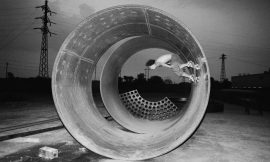It is never easy to move around and park in Paris. Artisans, delivery drivers, installers, technicians, home care workers, and many other professionals who use a vehicle experience this every day. The upcoming Olympics are a cause for concern for them, as the security measures announced by the Paris prefect will substantially disrupt traffic conditions in Paris, its surrounding areas, and on some major routes into the capital… and the difficulties will start well before the games.
Complicated 8 months ahead
The disruptions will not be limited to the duration of the Olympic (July 26-August 11, 2024) and Paralympic (August 28-September 8, 2024) events. Taking into account the phases of setting up and dismantling temporary sites and facilities, it becomes clear that from March to October 2024, those who have no choice but to travel around Paris to make deliveries, transport people, or work with clients will need to be patient and stay informed about ongoing and upcoming operations, adjust their travel plans, and inform their clients – individuals, businesses or companies – as early as possible about the changes caused by these disruptions.
Strict compliance with the measures
Fortunately, the Olympics will not bring Paris to a standstill! However, working in Paris during the events will require itinerant professionals to be even more organized and meticulous in their planning. Getting familiar with the defined security measures now is a first step to understanding the disruptions to come.
Four perimeter rules
Four perimeters apply to each of the sites hosting Olympic events or related activities in Paris, Seine Saint-Denis, and the rest of the Île-de-France region. Each perimeter has specific access and circulation conditions for motorized vehicles. They are not permanent except around the Olympic village in Saint-Denis, and will be activated 2.5 hours before the start of the events and deactivated 1 hour after they end.
Restricted zones and traffic regulations
A large area will be off-limits to motorized vehicles, except for those with special permission. There will also be regulated traffic zones aimed at reducing flow by redirecting transit traffic. Only drivers who can justify a need for access (deliveries, emergency repairs, home or work access) will be allowed to circulate. Some lanes will be reserved for athletes, emergency services, officials, taxis, and public transportation. 185 kilometers of roads will be affected in and around Paris.
Ensuring business continuity
Itinerant professionals operating in the affected zones can start organizing by keeping themselves informed on the websites of the prefecture, the city of Paris, or Paris2024.org, especially to obtain exemptions if possible. They can compare their regular routes with the maps published by the prefecture, identify passageways and clients within the restricted areas affected by motorized traffic restrictions. It is essential, depending on the number of clients concerned, to explore possibilities of changing intervention hours or using alternative modes of transport, knowing that stations will remain open and bicycles will move freely. It is also advisable to avoid scheduling appointments on July 26, the day of the opening ceremony, when it will be nearly impossible to move around, even with an exemption. Finally, routes should be recalculated and travel times adjusted to accommodate traffic restrictions and their impact on overall traffic flow.
In summary, patience and optimization solutions will be essential for itinerant professionals during this unprecedented period.



